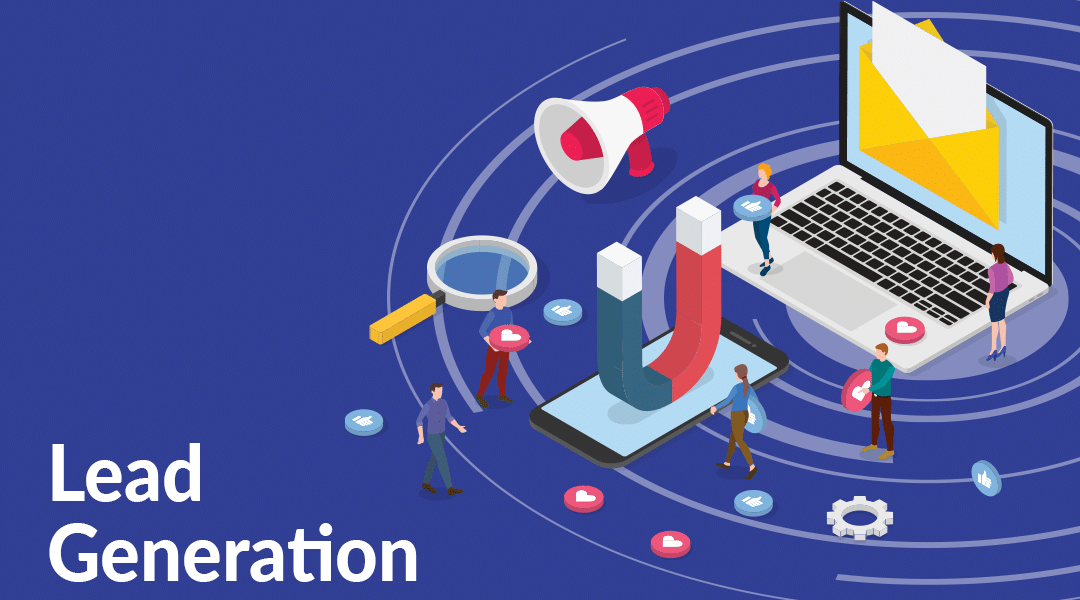Lead generation services are crucial for businesses looking to attract potential customers and convert them into actual clients. Here’s a comprehensive guide covering everything you need to know about the best lead-generation services for your business:
1. Definition of Lead Generation:
- Lead generation is the process of identifying and cultivating potential customers for a business’s products or services. This involves capturing interest and obtaining contact information for further engagement.
2. Importance of Lead Generation:
- Effective lead generation is vital for business growth. It helps expand the customer base, increase sales opportunities, and build a pipeline of potential clients interested in what your business offers.
3. Types of Lead Generation Services:
- a. Inbound Marketing:
- Attracts potential customers through content creation, SEO, and social media.
- b. Outbound Marketing:
- Involves reaching out to potential customers directly through methods like cold calling and email marketing.
- c. Content Marketing:
- Focuses on creating valuable content to attract and engage a target audience.
- d. Paid Advertising:
- Uses paid channels such as PPC advertising to reach a specific audience.
- e. Social Media Marketing:
- Engages with potential customers on social platforms to generate leads.
- f. Email Marketing:
- Utilizes targeted email campaigns to nurture leads and encourage conversions.
4. Benefits of Using Lead Generation Services:
- a. Targeted Audience:
- Helps businesses reach a specific audience interested in their products or services.
- b. Increased Sales Opportunities:
- Generates leads that have shown interest, increasing the likelihood of conversion.
- c. Cost-Effective:
- Can be more cost-effective than traditional advertising, focusing on reaching a targeted audience.
- d. Data-Driven Insights:
- Provides valuable data insights into customer behavior, preferences, and engagement.
5. How to Choose the Best Lead Generation Service:
- a. Define Your Objectives:
- Clearly define your lead generation goals and objectives.
- b. Know Your Target Audience:
- Understand your target audience to choose services that align with your audience demographics.
- c. Research and Compare:
- Research different lead generation services, compare their features, and consider client reviews.
- d. Analytics and Reporting:
- Choose services that provide analytics and reporting tools for tracking campaign performance.
- e. Budget Considerations:
- Consider your budget and choose services that offer cost-effective solutions.
6. Common Challenges in Lead Generation:
- a. Lead Quality:
- Ensuring the leads generated are of high quality and likely to convert.
- b. Lead Conversion:
- Converting leads into actual customers can be a challenge and requires effective nurturing.
- c. Data Privacy:
- Adhering to data privacy regulations and maintaining compliance.
7. Lead Generation Trends:
- a. Personalization:
- Personalizing marketing efforts for individual customer preferences.
- b. Artificial Intelligence (AI) and Automation:
- Utilizing AI and automation for more efficient lead generation processes.
- c. Interactive Content:
- Using interactive content like quizzes and polls to engage potential customers.
- d. Account-Based Marketing (ABM):
- Focusing on specific target accounts with personalized marketing strategies.
- e. Video Marketing:
- Incorporating video content for increased engagement.
8. Common Lead Generation Metrics:
- a. Conversion Rate:
- Percentage of leads that convert into customers.
- b. Cost Per Lead (CPL):
- Cost associated with acquiring each lead through a specific marketing channel.
- c. Return on Investment (ROI):
- Measure of the profitability of a lead generation campaign relative to its cost.
- d. Click-Through Rate (CTR):
- Percentage of people who click on a link in a marketing message.
- e. Lead Quality:
- Assessment of the likelihood of leads to convert into customers.
9. Best Practices for Lead Generation:
- a. Audience Understanding:
- Understand your target audience to tailor campaigns effectively.
- b. Multichannel Approach:
- Use multiple channels to reach a diverse audience.
- c. Effective Follow-Up:
- Implement effective follow-up strategies to nurture leads.
- d. Optimize Landing Pages:
- Create optimized landing pages for better conversion rates.
- e. Continuous Testing:
- Continuously test and iterate your lead generation strategies.
10. Common Lead Generation Tools:
- a. CRM (Customer Relationship Management) Software:
- Manages customer interactions and tracks leads through the sales pipeline.
- b. Marketing Automation Platforms:
- Streamlines marketing processes and automates tasks for lead nurturing.
- c. Analytics and Reporting Tools:
- Provides insights into the performance of lead generation campaigns.
- d. Landing Page Builders:
- Tools for creating and optimizing landing pages for lead capture.
- e. Social Media Management Platforms:
- Assists in scheduling posts, monitoring social media, and engaging with potential customers.
Remember that effective lead generation requires a strategic approach, continuous optimization, and a good understanding of your target audience. Choose the lead generation services and strategies that align with your business goals and objectives.


